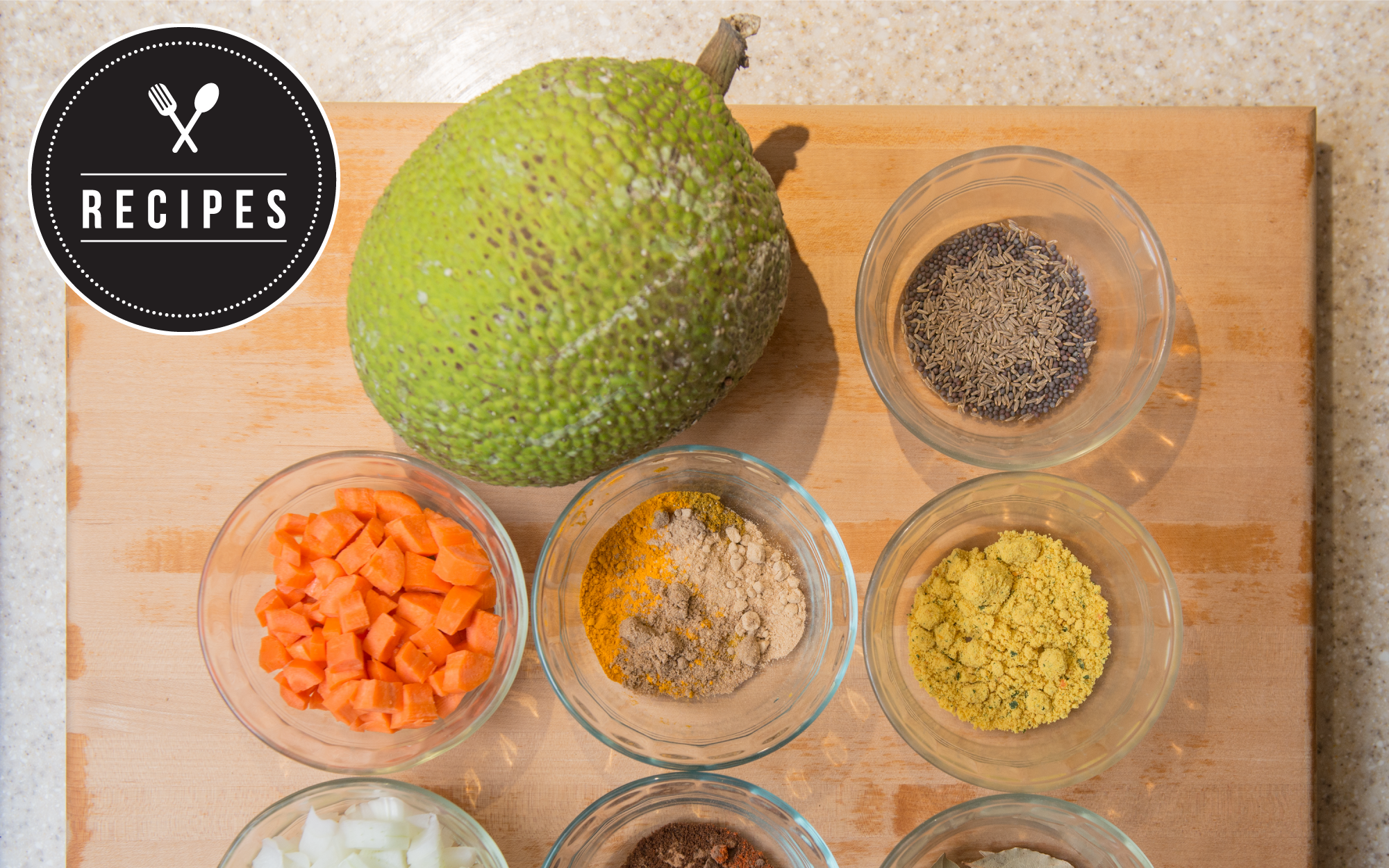Images by Tommy Shih
There are a few formative experiences I missed while growing up in Honolulu: learning how to surf or use power tools; radical destructuring of leaf piles; and enjoying the spectacular fruit that is ‘ulu, also known as breadfruit. I left Hawai‘i for college, the Peace Corps, and a man I met online before returning home and becoming a cook. Only while working in a local kitchen did I begin the most enduring love affair of my life—with ‘ulu.
‘Ulu has a long history in the islands. According to Hawaiian mythology, the god Kū saved his family (and the entire community) during a period of famine after burying himself in the ground and transforming into an ‘ulu tree. It arrived to the islands with Polynesian voyagers, who canoe-carried the staple crop, and flourished, used as a food source and material for construction and crafts.
Despite this historical validation, ‘ulu is far from today’s media darling. At first and every glance, the bumpy, oozy fruit looks wholly unsexy. But once you experience all its bounty, simply saying ‘ulu becomes intense palate foreplay. Mature ‘ulu is classy enough to be found in the entrées of Hawai‘i’s top chefs; overripe, it transforms into a creamy, indulgent dessert ingredient.
You can tell ‘ulu is maturing by its increasingly unattractive appearance. The vibrant, green skin turns crusty and yellow, sappy and smooth. Super-ripe ‘ulu has the consistency of soggy dough, while moderately ripe ‘ulu is firm enough to be cubed or sliced, then fried or steamed and tossed into soups, breakfast hash, or salads. You can also dehydrate thin slices, dipping the chips in chili, honey, or guacamole. I like to simply blend an overripe ‘ulu with coconut milk, bake it until the top is crisp, and scoop spoonful after spoonful of the warm, sweet custard into my mouth. While I have yet to roast ‘ulu in an imu, it’s on my vision board between photos of Everest and 100 frolicking baby goats.
‘Ulu, which is rich in carbohydrates and potassium, is occasionally available at Kokua Market for $1.99 per pound or at farmers markets from vendors such as Otsuji Farm, but I’ve found the best way to acquire it is to let it be known on the coconut wireless that you have an unconditional ‘ulu love, whenceforth ‘ulu, baby goats, and Everest will appear in your life with abundance.
Moroccan-Style ‘Ulu Curry
Gluten Free and Vegan
12 servings

Ingredients:
• 4 tablespoons coconut or olive oil
• 1 medium onion, diced
• 8 large cloves garlic, minced
• 1-1/2 tablespoons cumin seeds
• 1 large carrot, diced
• 1 large ‘ulu, cubed
• 1 4.5-ounce can diced tomato
• 1 tablespoon tomato paste
• 6 cups water
• 1 15-ounce can chickpeas, white beans, or lentils
• 1 cup dried apricot, diced
• 2 vegan bouillon cubes
• 3 tablespoons agave
• 2 tablespoons lemon juice
• 1-1/2 tablespoons coriander
• 1-1/2 tablespoons cinnamon
• 1 teaspoon turmeric
• 1 teaspoon ground cloves
• 1/2 teaspoon allspice
• 1/2 teaspoon cayenne
• 3 bay leaves
• 2 teaspoons black pepper
• 1 teaspoon sea salt
1. In a large pot, heat oil over medium heat and sauté onions for 10 minutes. Add garlic, cumin seeds, and carrots and sauté for another 5 minutes, stirring frequently.
2. Add all remaining ingredients. Bring to a boil for a few minutes before reducing heat to low. Stir frequently to keep bottom from burning.
3. Simmer for around 20 minutes, stirring occasionally, until ‘ulu can easily be pierced with a fork. Adjust seasonings as needed. Enjoy with whole grains or naan.
Not sure how to start? Check out: How to prepare ‘ulu like a pro.
Love it? Here’s another recipe to try: ‘Ulu-chia muffins with tofu-cashew creme .

